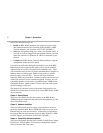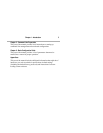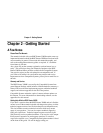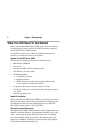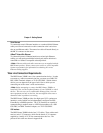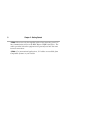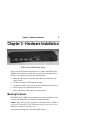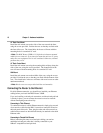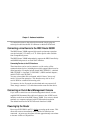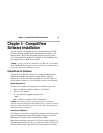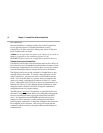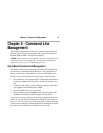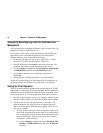
10 Chapter 3 - Hardware Installation
19" Rack Front Mount
Install the rack-mount ears on the sides of the case towards the front
using the screws provided. Position the ears so that they are flush with
the front of the case. The slotted holes in the ears will mate with the
mounting holes in a standard 19" rack.
v
Note: The RISC Router 3500R is 1U high when its bottom-mounted
rubber feet are removed. If you intend to mount the unit in a 1U space,
make sure your equipment rack is well ventilated. Otherwise, thermal
problems may occur.
19" Rack Center Mount
Install the rack-mount ears using the mounting holes midway along the
sides of the case, using the screws provided. The slotted holes in the
ears will mate with the mounting holes in a standard 19" rack.
Wall Mount
Install the rack-mount ears on the middle of the case, using the screws
provided. Position the ears so that they are flush with the bottom of the
case. The slotted holes in the ears will mate with wood screws or other
attachment methods.
v
Note: Wood screws are not provided with the rack-mount kit.
Connecting the Router to the Ethernet
For thick Ethernet networks, you should have installed your Ethernet
cabling before you install the RISC Router 3500R.
If you are installing a twisted-pair connection, and the twisted-pair hub
is already in place, you can connect the router to an active network
without interrupting network activity.
Connecting to Thick Ethernet
To connect the router to a thick Ethernet network, simply plug one end
of a transceiver cable into the DB-15 transceiver connector located on
the back panel of the unit. Then, plug the other end of the transceiver
cable into the transceiver which should already be attached to the thick
Ethernet cable.
Connecting to Twisted-Pair Ethernet
Before connecting the router to twisted-pair cabling you need an
unshielded twisted-pair cable that is already connected to your
10BaseT-compatible twisted-pair hub.



